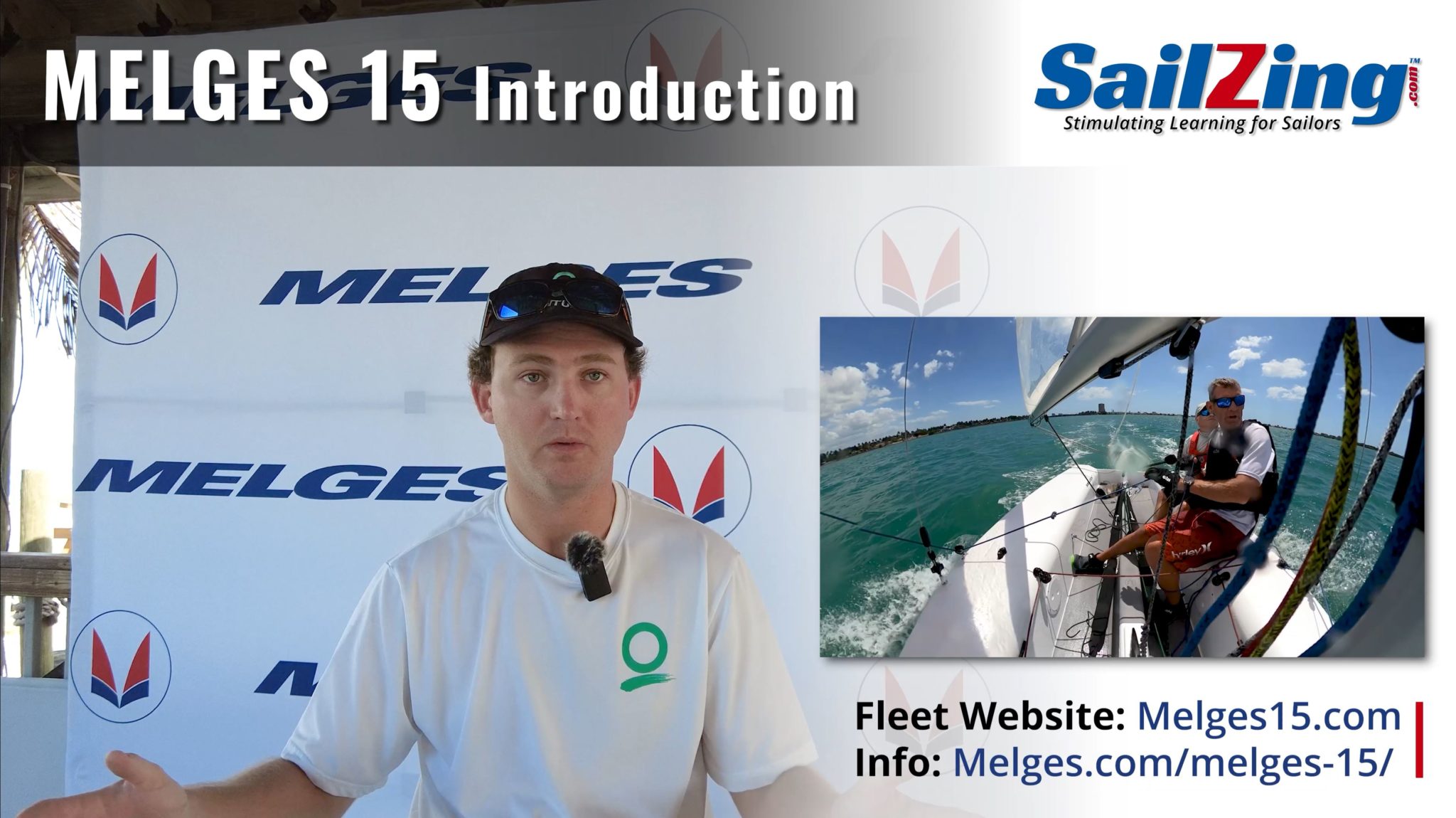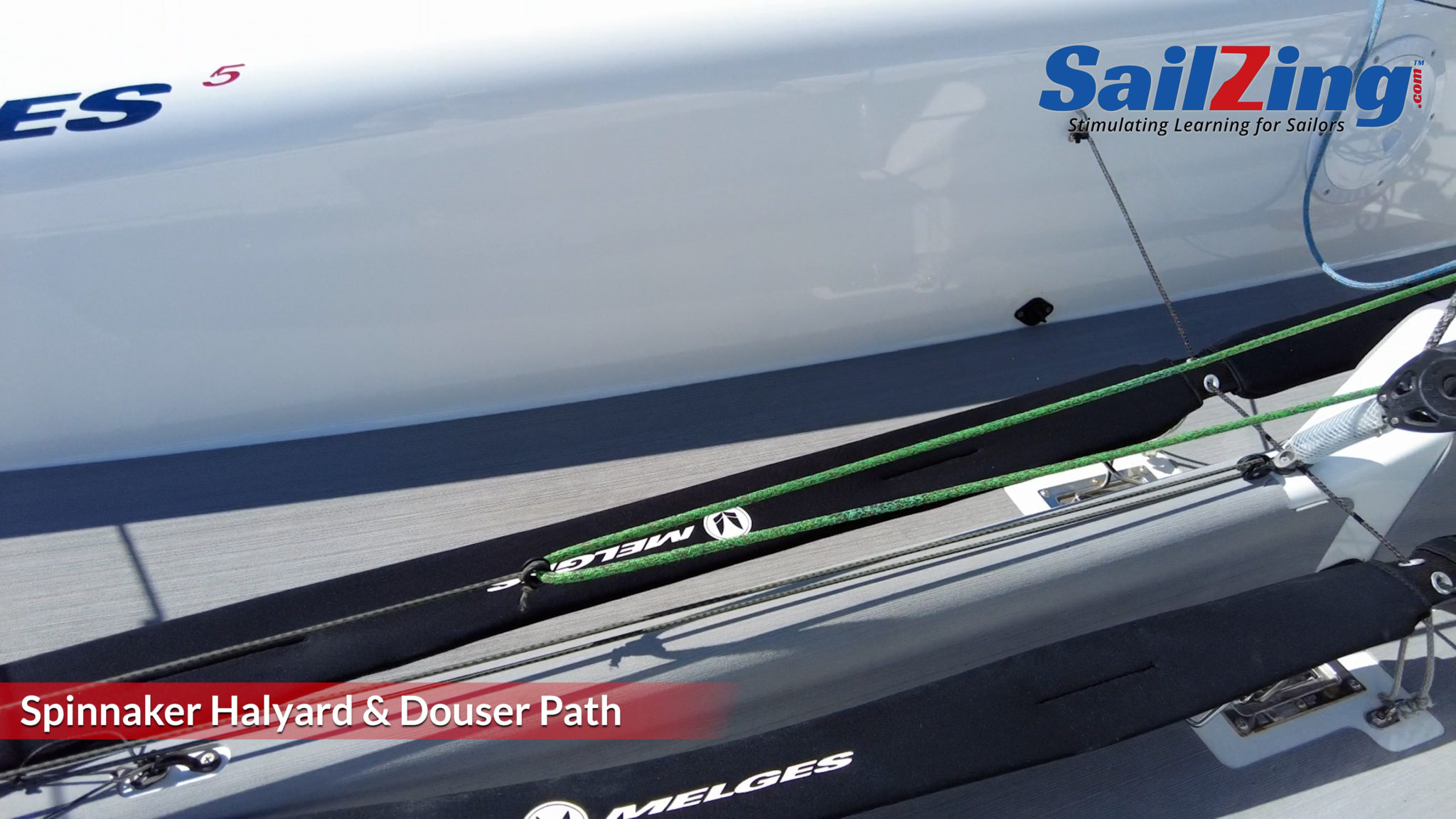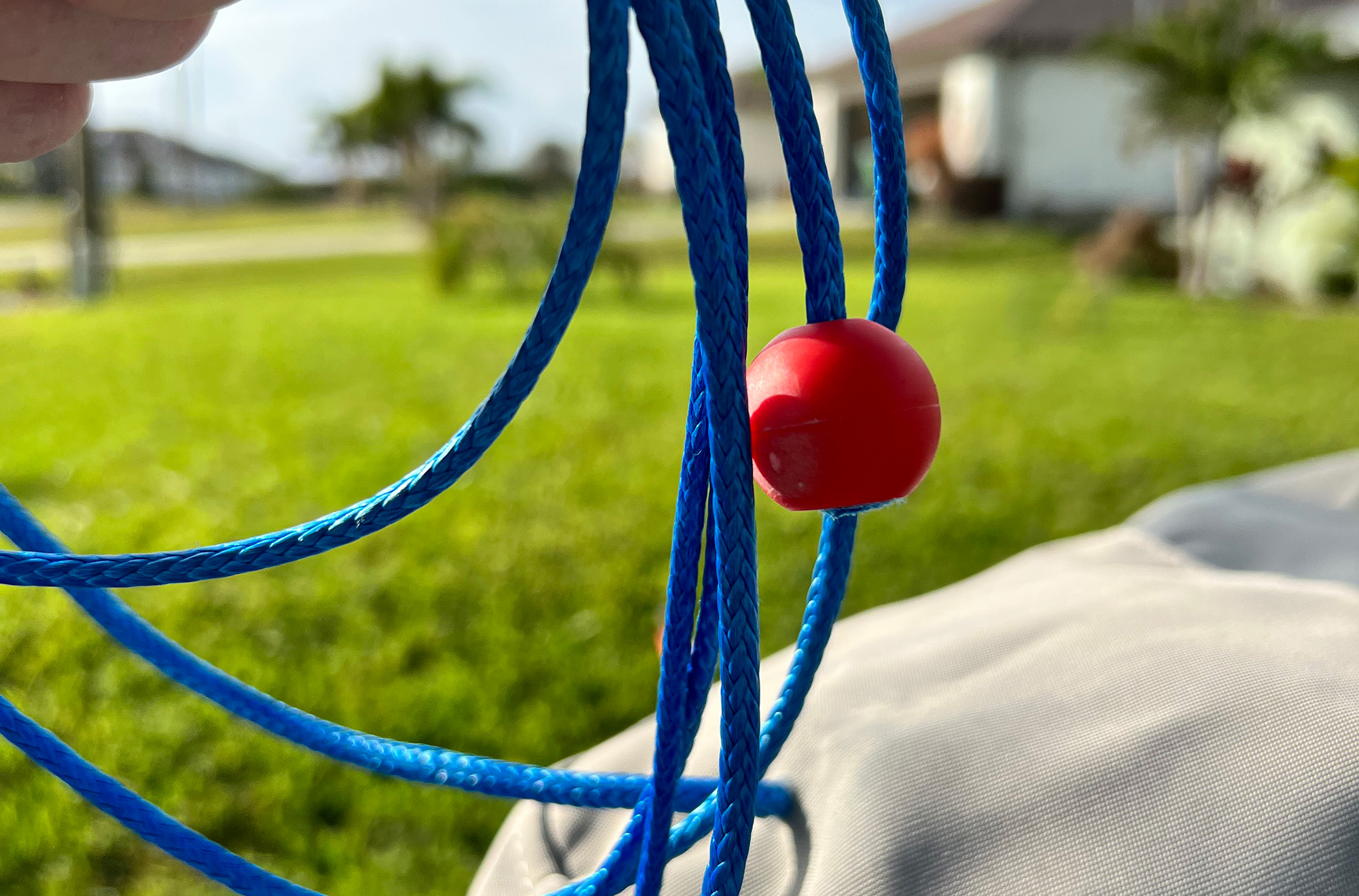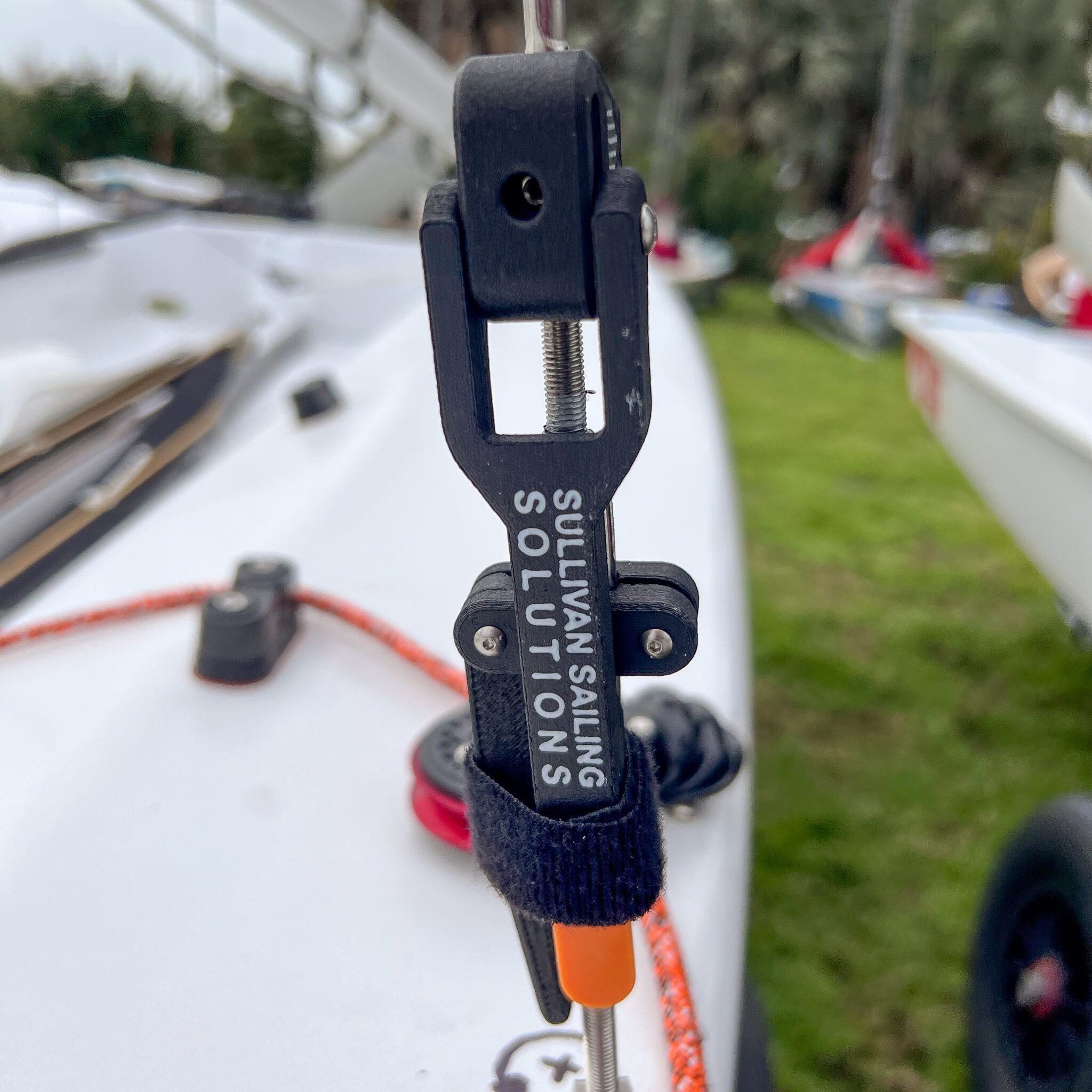We spoke with Eddie Cox from Melges Performance Sailboats in February 2022 at the Sarasota Winter Series event. The Melges 15 had just won the Sailing World Boat of the Year award! SailZing.com will be using the Melges 15 as the basis for some new articles dealing with similar sail packages and techniques.
Related: Melges 15 Assembly – A Comprehensive Look: From Delivery to …
Eddie went on to win the three event series, so we’re happy to have him introduce the boat to us.
Scroll down for the interview video below.
SZ: Hi Eddie! Why don’t you introduce yourself?
EC: Hi. I’m Eddie Cox and I work for Melges and the Melges 15 is kind of my main focus there, so excited to talk about it.
SZ: …and you got a big award this year.
EC: Right. Boat of the Year from Sailing World! This is great. So, I think it feels good to kinda have that reinforced what we’ve kinda known for a long time, that the Melges 15 is a great boat. So, it’s all good.
SZ: …and lots of sales. This thing is taking off, isn’t it.
EC: Yes. It really has. We’re coming up on two years and we’ve sold over 400 boats. …and we haven’t launched the boat in Europe yet. That’s coming up soon. [NOTE: Launched Worldwide on March 9, 2022]
Fleets
SZ: If people were looking for strong fleets, a couple of good areas would be…?
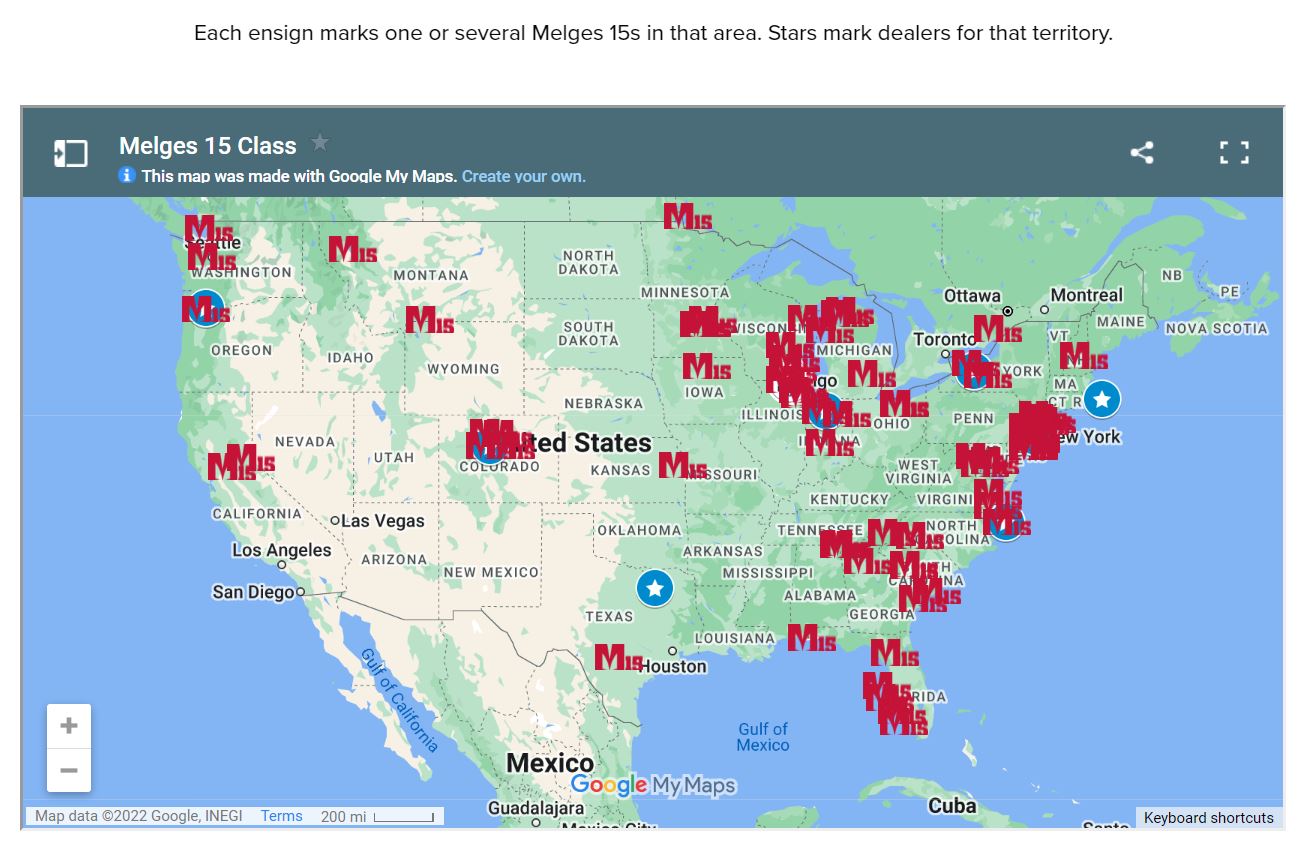
EC: Really, all over. You know, if you’re looking for a boat, I really recommend reaching out to us and we can connect you to your local dealer. They can point you to where fleets are started, but it’s such a new boat and it’s such an awesome design that if you want to start a fleet at your club, this is the boat to do it in. You know. It fits everybody. So we can go into your club and hook you up with a boat to try for a couple days and get a bunch of people sailing in it and I think that you’d be surprised that a lot of people are very receptive. That’s happened all over the place. I think that we’ve got over twenty established fleets now.
Platform For Learning
SZ: So we’re talking from the Sarasota Sailing Squadron in Sarasota Florida. We’ve got a really strong fleet here and a lot of excitement about the boat. We’ve got this three regatta series down here [NOTE: Now moved to Jensen Beach on the Florida east coast to accommodate more sailors.]. You won (event) one…pretty expert in the boat. Let’s talk about…for SailZing.com a lot of our sailors are scow sailors…from a scow sailor’s perspective, getting into a Melges 15. What are the sort of things that I’m going to have to transition…
EC: I’m gonna start with the similarities ‘cuz there’s a lot of them, right? For Melges, our “bread and butter” is scows…and we think that the scow hull shape is second to none. So we wanted to incorporate a lot of those great things that we have going on with all of our scow classes into the Melges 15. You know the first one for us, you know, is if you’re an E Scow sailor, this boat’s gonna be…a baby step for you. You now the angles downwind are very similar. The tactics downwind are very similar. With assymetrical kites, the systems are very similar. So that’s a really huge benefit of this boat, especially for clubs that have E Scow fleets. This boat is like a baby trainer for the E boats. You can put someone in the front of this boat and they can hop on an E Scow and they can do the jib and they can do the kite, because they know all the systems. Doing the front of a Melges 15 is really, really easy. There’s not a lot of loads. So you can introduce someone to crewing really easily. …but, you know, in terms of scow sailing I think it’s a great kind of training boat for the E Scow really. You know, you look at the MC Scow, which is the largest one-design adult class in the country. I mean it’s huge. …and the great thing about the MC is the stability of the boat. …and that’s what you get with the Melges 15. …and that’s why it’s great for so many different ages. You know, it’s a small 15 foot boat, but it’s super stable. …and that has a lot to do with our scow background. We knew that to have a successful class, we had to have a stable boat, so the Melges 15 touches on that.
Related: Melges 15 Fleet Website
SZ: I came from the MC Scow most recently and I noticed that even though I am really new to flying a kite, the boat was very forgiving. The other thing that I was shocked by was the loading pressures, even on the main sheet, are not very heavy.
EC: No.
SZ: It’s not a hard boat… It’s not laborious to run. It’s more of a mind and agility thing…
Pushing The Sport
EC: Exactly. Yep. …and a lot of technique downwind. Which I think is good. Because, you know, for a lot of people who come from different classes, like you, you come from the MC, you step into the Melges 15, the downwind sailing is a whole new thing. Right? ..and you have to learn the angles. You have to learn how to use the apparent wind… So, I think that’s really good. I mean that’s a big goal of ours with this boat is to help the sport progress. Right? We looked at American sailing and it’s stuck in the mud. Right? So we wanted to… our solution to every problem in sailing is to build a boat. We’re boat builders. That’s what we do. Other people…sailing instructors have different solutions, but that’s ours. Right? …and we think that this boat will help progress the sport, raise the level, and uh that’s really exciting for us.
SZ: It seems that, although you do build boats, the truth is that you’re also building excitement.
EC: Yep.
SZ: I think that one of the things that’s interesting about what I’ve seen with the Melges 15 and what sucked me into it, and the MC has the same thing, there’s a ton of excitement, there’s a lot of new learning available in the Melges 15…
EC: One of our big goals at Melges always is to have great class support. …and to, like this Winter Series, right? We’re down here. We’re doing clinics. We want to make it fun for people. If you’re new to the boat, we want to make it fun for you to step into it and to learn, right? Everybody’s at a different level. So, you know there’s seventy boats out there, you’re going to be able to sail, no matter what your skill level is, there’s going to be somebody you’re racing against on the water. Which is great. You know, but…our goal at Melges, what I think is unique in at least the U.S. is our class support. It’s really second to none. We’re at every regatta. We’re making sure everybody’s good with their boat. They’re running correctly. We want to make it as painless and fun for people as possible. ‘Cuz sailing…it’s a lot. There’s a lot of logistics. So you want to take as much of that out of the equation as possible. That’s our goal with all our classes, but especially the MC, Melges 15…you know we want to be there for our customers and make sure that it’s fun for them.
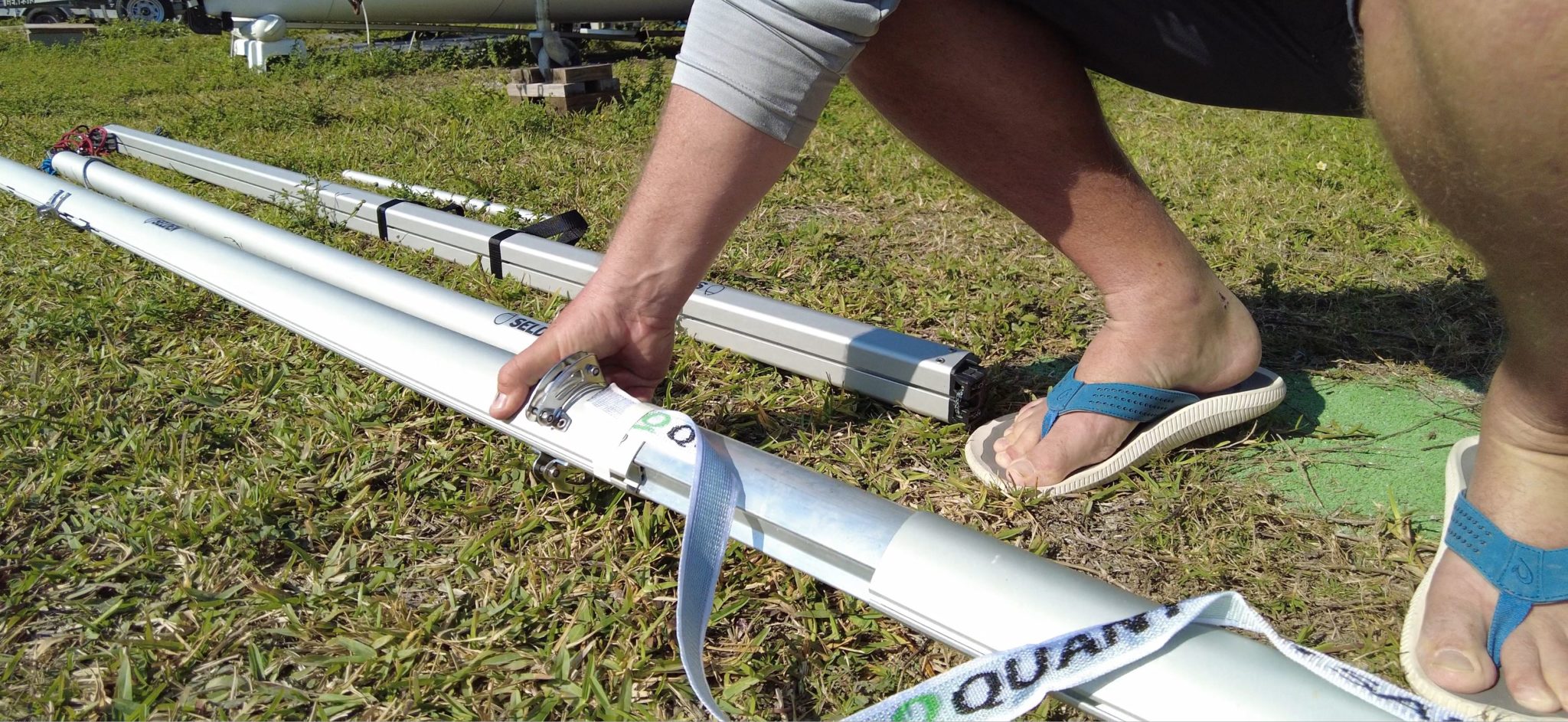
SZ: So, overall, it’s a lighter boat too, which means it’s a good traveler.
Easy Roadie
EC: Yea. For sure. You can dolly launch it, which is key. You can get it on top of a Suburban with three people, which is cool. But most people have a road trailer…super easy to drive it. So for people that are not used to driving boats and trailers, this is a great trainer boat for that too. Which I think is really important. …and then you know, there’s a lot of people from clubs up north who come down to this series down here and they get together with all of their buddies and they buy a stacking trailer or a box trailer. We’ve got a lot of those and they load the trailer up in the Fall and one guy drives it down and one guy drives it back. …or they pay a U-Ship guy to drive it down. Which is cool. So all that makes it more accessible. The transport aspect of it is key. It’s a two-piece mast, so the mast can fit inside the boat. Which means that you can have a shorter trailer. All that stuff is important.
SZ: …or you can put it inside of a truck or something like that if you’re putting the boat on the roof rack…
EC: Exactly. For sure. Yep.
SZ: So, how do you see this fitting in with the youth sailing and think about things like the 420 / 470 that you might encounter in college… Do you see the Melges 15 playing a role in getting the youth up to speed…
Sailing With Friends
EC: Right. Well, initially we saw this boat as a next step after college. That was the initial thought. …and we realized that the only way to build a really successful one-design class is to have people that are a little bit older that want to sail your boat too. Right? So that’s how you’re going to get your initial base fleet out there. So, that was really our initial target was like how do we build something that’s inexpensive that is easy to campaign for people that are straight out of college and can easily step into the boat and continue their sailing. There’s a huge drop off after people graduate from college and then there’s also a huge drop-off after people leave high school sailing. …and there’s a big drop-off, at least in the Inland [ILYA] after kids leave the X Boat. So we wanted to catch those kids, and give them a route that they can easily step into and continue to sail with their friends. ‘Cuz that’s a big thing. I think that a lot of people in these more adult classes don’t realize. That’s, at least in the Inland, why the X Boat is so great, because everyone is sailing with their friends. …and that’s why it’s fun. So, we need to continue that and have it be focused on more than just the sailing. We want to have good parties. We want to have a good social scene. So, at least in the Inland, because we’re kind of focused there, the big, you know, kind of goal was to see kids come out of X Boats and be able to afford a Melges 15. Sell your X Boat and be able to move that money right into a Melges 15. Right? Which you can pretty much do with resale values in the X Boat. …and then, ah, sail that boat for as long as they want…until they’re 60, if they want to. We had a great model with the M-16, but I think that this boat does a lot more than that boat ever did. It teaches you a lot more with tuning, asymmetrical spinnaker, setting up your sails, a little more adjustability to the boat, so…that was really important to us, as I said earlier, to raise the level. That’s kind of our vision, at least for the Inland. You leave the X Boat, step right into the Melges 15. You’re sailing with all of your friends. It’s fast! It’s fun! Which is really important to keep the kid’s interest piqued.
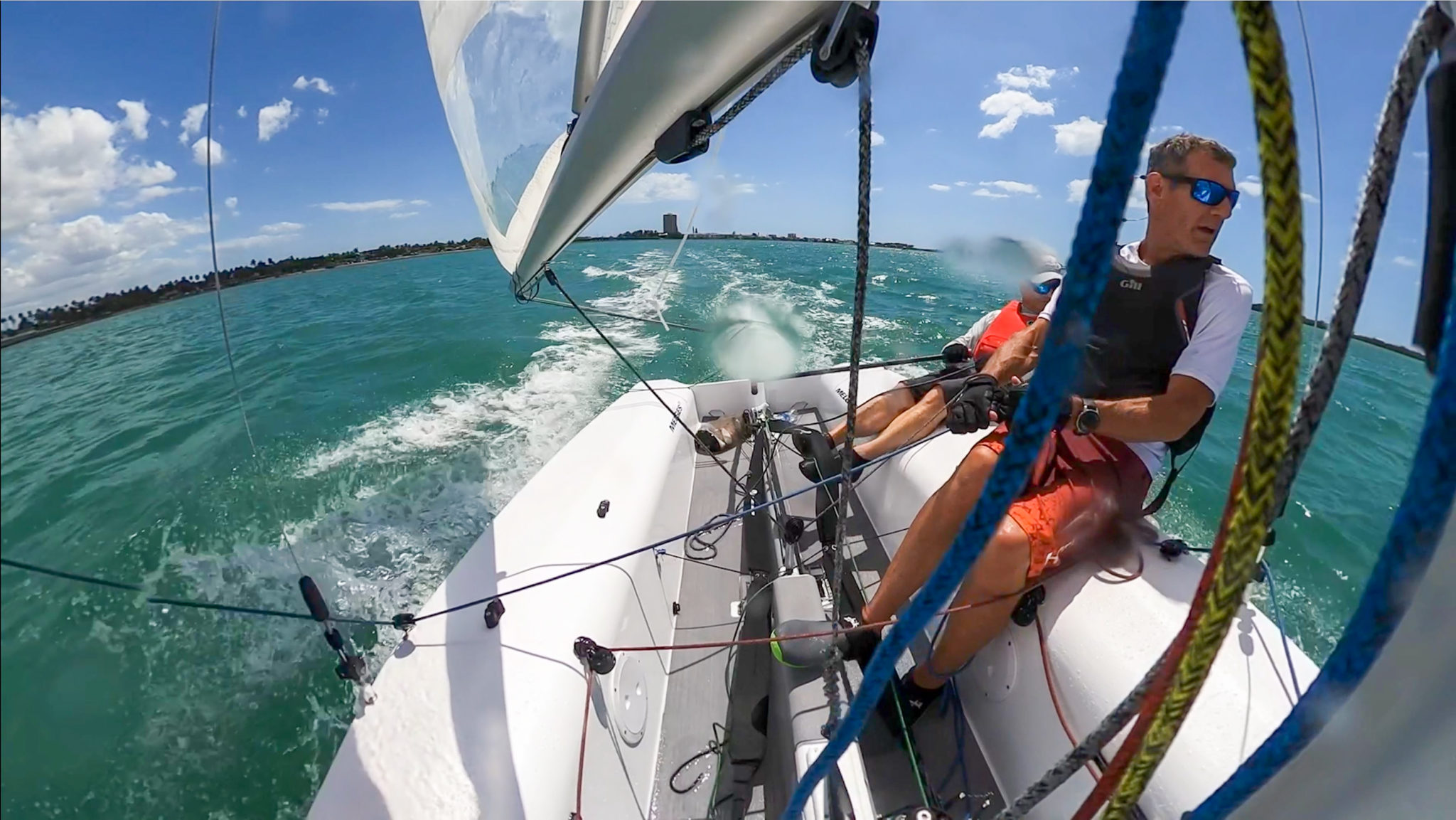
SZ: It just jumps off the water. You light up that spinnaker and it just takes off.
EC: Yea. It’s, it’s…you can go close to 20 knots downwind in this boat, which is just…
SZ: What about weight? It doesn’t feel like you have to be… I felt as though I had to be a bit bigger to sail an MC properly single-handed. The Melges 15 just feels like a boat that can handle a lighter crew.
EC: For sure. We’ve had a pretty good view of what competitive weights look like and it’s pretty amazing. The Midwinters last year was won by a team that was 350 (pounds combined). The last regatta that we sailed, the team was 300. The Nationals, which had some wind, the team was 285, you know? I think it really comes back to the goal of all these one-design classes were it really depends on how you sail your boat. Right? So, that is kind of a pleasant surprise even to us…the ability of this wide range of weights and ages…able to be competitive all the time. I think an important thing at least for youth sailing too is you want to be able to step out of your youth class and sail with a peer, right? Sail with someone that’s the same age as you. ‘Cuz that makes it a lot more fun. …and this boat allows you to do that.
Keeping The Boat Under You
SZ: In a big blow, it feels like this boat, it’s not a boat that caps out… It feels as though this boat handles the breeze really well.
EC: It does. That was like a huge focus of ours, designing the boat. It’s a wind-driven sport. So we want to go sailing when it’s…windy. That’s when it’s fun. Exciting. Right? So this boat really allows you to do that, you know? I think one of the biggest things for me that was surprising about the boat, we went out on one of the first demo sails ever. We were on Lake Winnebago and we got a big puff, a big knockdown puff, and the team that was on the boat, they were pretty green sailors. The puff hit them, the boat went up on its ear and it sat there. It didn’t capsize. The guy was luffing the kite and the main was all the way out and as soon as that happened, I was like “Wow. This is great.” That forgiveness that the boat offers…you know. If you take a new crew sailing for the first time and you go out in a big blow and you capsize the boat. They might be turned off. But if you can take a crew out in a big blow and you can make it fun for them and you can keep the boat underneath you, which this boat allows you to do, it can really hook somebody for life.
SZ: Actually, we had that experience last regatta. We got knocked over. They actually called us as a boat over, but we were just hanging there with the kite up and everything and we managed to get the boat back up and go. It was incredible how stable it is.
EC: You got the boat back under you. That has a lot to do with the overall stability. I think that’s a byproduct of it. The boat is super stable when you’re sitting at the dock standing on the side tank, but that all still filters into the downwind sailing when you’re really rippin’ and you maybe make a mistake and don’t bear away enough in the puff. The boat’s gonna be like “Ok. I forgive you.”
Tuning It Up
RELATED: Melges 15 Tuning Guides / Tutorials
SZ: Are there any particularly unique things about tuning…
EC: The rig’s pretty loaded up. You sail with quite a bit of rig tension. I think it’s good because it teaches you how to tune your boat. Right? …and we’re missing that in a lot of classes. …but it’s also very simple. You put your Loos Gauge PT-1 on your forestay and get it to your base setting. Make sure your rig’s even side to side and you go sailing. One of the cool things we have just a single length forestay. So there’s no screwing around with mast rake. They’re all the same. Which really simplifies the tuning. So simplicity, that’s very important. The spreaders are adjustable. You can adjust the spreaders in and out. We’ve done a lot of sailing in the boat and what we put in the tuning guide is what we’re sailing at. We’re always pretty transparent with the fast settings that we’re finding, so…if you look at the tuning guide and at those numbers that’s usually what, at least the guys from Melges, are using all the time. They seem to be pretty good.
SZ: Obviously, you won Boat of the Year and you’re also a sanctioned ILYA – Inland Lake Yachting Association – fleet. So people should be giving this boat a look and you said that you would give demos…
EC: There are club races at Lake Geneva (Wisconsin) all summer, so if you want to try out the boat, that’s a good time. So if you want to just go sailing, give us a shout here in the Inlands, and we can get you out in the boat. If you’re anywhere else in the country, same thing, email us and we’ll connect you with a local fleet or a local dealer that can help you try the boat…or BUY one. You know? If you contact us, we’ll find a way to get you in a boat.
SZ: Well, Thank you Eddie!

